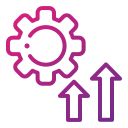Strategies for Enhancing Remote Work Efficiency
Today’s chosen theme: Strategies for Enhancing Remote Work Efficiency. Welcome to a practical, human-first guide to working smarter from anywhere—with routines, tools, and mindset shifts that make every focused minute count.

This is the heading
Lorem ipsum dolor sit amet, consectetur adipiscing elit. Ut elit tellus, luctus nec ullamcorper mattis, pulvinar dapibus leo.

This is the heading
Lorem ipsum dolor sit amet, consectetur adipiscing elit. Ut elit tellus, luctus nec ullamcorper mattis, pulvinar dapibus leo.
Time Architecture: Plan Your Day Like a System
Time Blocking with Energy Mapping
Identify your high-focus windows and reserve them for deep work blocks. Schedule shallow tasks when energy dips. This alignment beats generic schedules and yields measurable improvements in completion rates without longer hours.
Pomodoro, But Purposeful
Use 25–50 minute sprints with defined outcomes, not vague intentions. Track two metrics: interruptions prevented and tasks finished. Adjust interval lengths weekly and share your winning configuration to help readers refine theirs.
The Daily Highlight and Buffering
Choose one highlight that, if completed, makes the day successful. Add buffer blocks for spillover. This prevents schedule collapse from inevitable surprises and maintains momentum across complex, multi-step projects.
Asynchronous Communication for Fewer Meetings
Summarize context, options, and decisions in concise memos. Link to sources, tag owners, and record next steps. This prevents repeated clarifications, shortens response cycles, and keeps knowledge durable beyond individual calendars.


Asynchronous Communication for Fewer Meetings
Cancel when a doc suffices, convert to async when discussion is narrow, compress to 15 minutes when live is necessary. Track meeting cost saved each week and post your results to encourage team-wide adoption.
Deep Work and Attention Hygiene
Before a focus block, close messaging apps, silence the phone, and set a visible timer. Tell teammates your availability window. Small pre-commitments stop tiny leaks that quietly drain hours of prime attention.

Sustainable Energy: Microbreaks, Movement, and Recovery
Every 60–90 minutes, walk, stretch calves, and rotate shoulders. These tiny resets prevent afternoon fog and reduce error rates, especially in meticulous tasks like code reviews or financial reconciliations.
Boundaries, Routines, and Team Agreements
Publish your work window and response expectations in your profile footer. Clear norms prevent urgent-by-default pings, enabling teammates to plan their own deep work without guessing your availability.

Lead Indicators Over Lagging Drama
Count focused hours, task starts minimized, and handoff delays reduced. These predict outcomes better than end-of-week scramble totals. Post your favorite metric and why it actually changed your behavior.

Lightweight Weekly Retrospective
Each Friday, ask: What accelerated me? What slowed me? What will I change Monday? Capture one experiment, run it for a week, and report back to sharpen our collective playbook.
Join our mailing list
